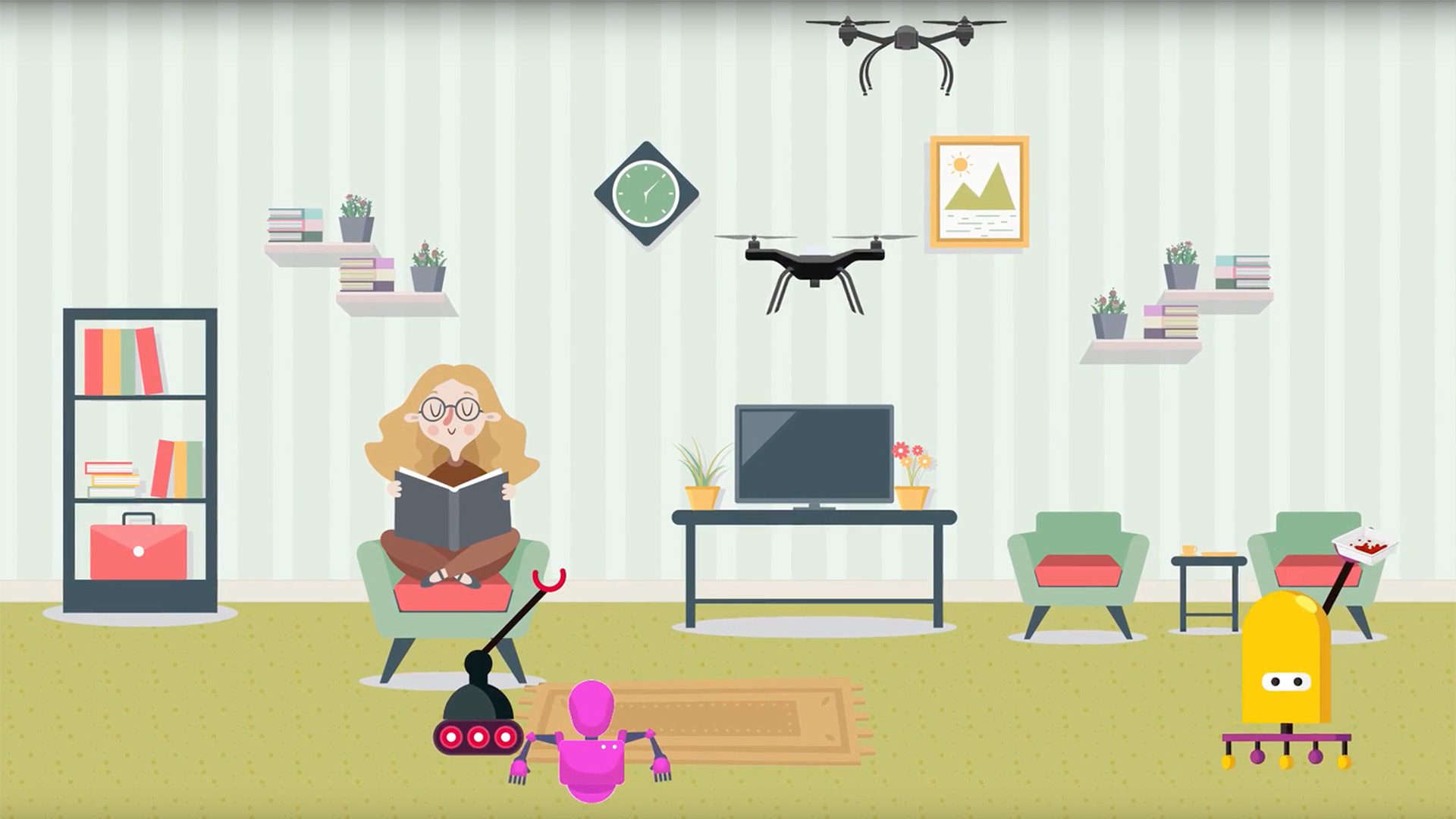- November 08, 2018
- By Melissa Andreychek
As the old saying doesn’t exactly go: Hundreds of artificial minds are better than one.
That power in numbers is how Michael Otte, an assistant professor of aerospace engineering, approaches robot decision-making. In his research, he wirelessly connects a large number of robots into a single, complex computational entity, which roboticists call a swarm. He trains them to connect, communicate and share data to form a picture of their environment—and then collectively figure out how to respond to it as a single, albeit distributed, computer.
“The concept of a ‘group mind,’ in which multiple consciousnesses are linked into a single intelligence, has been a plot device in science fiction literature since at least the 1930 novel ‘Last and First Men,’” said Otte. “I wanted to see if I could successfully apply that concept of a group mind in robotic swarms. Each robot has just a little bit of computational power, but together, they have a lot more than that.”
In a paper recently published in The International Journal of Robotics Research, Otte describes training a legion of Kilobots—a simple robotic platform only 3.3 centimeters tall—to accomplish something bigger than themselves, much like the colonies of ants or bees that partly inspired his research.
Individual ants, for example, are by themselves simple organisms capable of simple tasks. One ant searches for food; another ant lays eggs; still another builds walls made of soil. Many ants together, however, form complex social networks that can perform complex tasks for the collective good.
While a single Kilobot has but a single light sensor capable of discerning only a single light value, a swarm of Kilobots can combine their sensor data to ‘see’ across their entire environment. Each robot communicates wirelessly via infrared with its neighbors, forming an artificial neural network across the swarm, which can now detect and recognize images created by projected visible light.
In one experiment, Otte trained this artificial group mind to recognize a projected peace symbol or biohazard symbol. If the group mind recognizes a peace symbol, the hundreds of individuals roughly organize themselves into a smiley face (left). A biohazard symbol, however, evokes a frowny face.
While the algorithm Otte used to train the Kilobot swarm is a tried-and-true set of rules used in artificial neural network research, he has newly modified it for use with a robotic swarm.
“Wireless communication is inherently unreliable; messages can be dropped between robots, and individuals can fall behind the group,” Otte said. “We accounted for this by programming neurons within the network to wait for neighbors who had fallen behind to catch back up to where they should be. This strengthens every robot’s neural pathways at the same rate over time.”
This capability is especially useful for groups in which different robots are programmed to perform different actions, like Otte’s swarm. If a robot falls too far behind its neighbor in training, it could compromise the response action, which is defined by the coordinated movement of the whole. In other words, one rogue robot could spoil the swarm.
“In a sense, the robotic swarm is only as strong as its weakest individual,” he said. “We need for all of the neurons in the entire brain to learn as a group. By waiting for individual robots who have dropped messages due to the unreliability of wireless networks, the swarm learns more efficiently, making itself stronger in the long run.”
Click below to watch a video on Otte's research.
Topics
Research